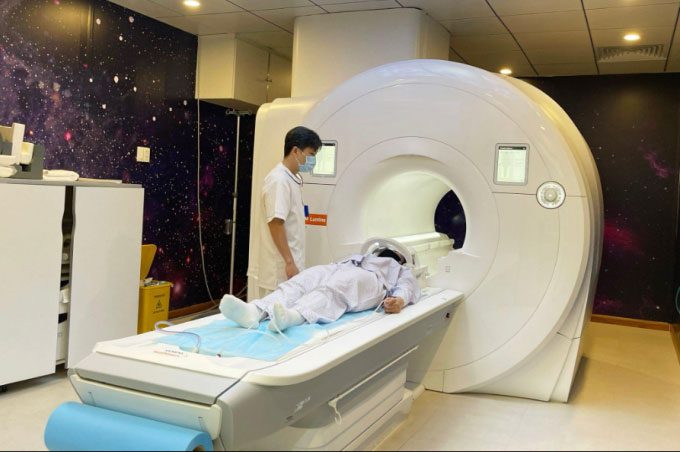Cold weather causes blood vessel constriction, increases blood pressure, raises blood viscosity, and raises the risk of stroke by 20-30% compared to normal weather conditions.
Associate Professor, Doctor Nguyen Van Lieu, Head of the Neurology – Stroke Department at Tam Anh General Hospital in Hanoi, shared this information, explaining that cold seasons in Northern and Central Vietnam or erratic weather in the South (hot days and cold nights) increase the risk of hemorrhagic and ischemic strokes.
“Stroke does not discriminate; it can affect anyone, from young to old.”, Dr. Lieu stated. Numerous factors contribute to the increased risk of this disease. Among them, the factor of changing weather can combine with dietary habits, lifestyle, and existing underlying health conditions.
In cold weather, the body reacts defensively by releasing more catecholamine hormones that cause peripheral vasoconstriction to maintain body warmth, resulting in increased central blood vessel pressure and elevated blood pressure. High blood pressure is the leading cause of strokes.
During winter, habits such as eating high-fat foods to store energy can lead to weight gain. Many people also exercise less and drink less water, along with increased smoking and alcohol consumption, which can easily elevate blood pressure, increase blood viscosity, heighten the risk of blood clots, worsen blood circulation, and lead to strokes.
The risk of stroke in cold weather is generally higher among older adults who already have underlying conditions such as hypertension, diabetes, cardiovascular diseases, obesity, and high cholesterol, according to Dr. Nguyen Thi Minh Duc, Head of the Neurology Department at the Neuroscience Center, Tam Anh General Hospital in Ho Chi Minh City.
Dr. Duc cited examples of heart disease patients having a high risk of stroke due to blood clots from the lower limbs or pelvis traveling to the heart and then to the brain. Diabetes also increases the risk of stroke due to inflammation and damage to blood vessels. Individuals with underlying factors like aneurysms or damaged blood vessel walls in the brain are more susceptible to ruptures that can cause hemorrhagic strokes.
For younger individuals, the disease stems from lifestyle risk factors such as prolonged sitting, obesity, smoking, excessive alcohol consumption, and insomnia…
Some conditions that increase the risk of stroke in younger people include carotid artery dissection with aneurysms, heart valve diseases, atrial fibrillation, structural abnormalities in the heart chambers, genetic predispositions, metabolic disorders, and infections.
Women often experience migraines, and the abuse of oral contraceptives can lead to blood clotting, causing damage within blood vessels and cerebral blood vessels.
Dr. Le Van Tuan, Director of the Neuroscience Center at Tam Anh General Hospital in Ho Chi Minh City, advises those with risk factors to proactively undergo screenings to detect abnormalities early and prevent strokes during the cold season.
Many people have hypertension without realizing it, discovering their condition only when facing kidney failure, heart failure, or a stroke. Type 2 diabetes patients often show no clear symptoms and usually seek medical attention only when complications arise, like infections, slow-healing wounds, or strokes. Dr. Tuan referenced research indicating that approximately 15-30% of emergency patients with strokes are newly diagnosed with diabetes.

3 Tesla MRI for stroke screening at Tam Anh Hospital in Ho Chi Minh City. (Photo courtesy: Hospital provided)
To perform screenings, doctors will order blood tests to detect diabetes and cardiovascular diseases that may cause cerebral blood clots. Echocardiograms assist doctors in diagnosing stroke risk. They can identify symptoms such as palpitations and heart flutters through clinical examinations, medical history inquiries, blood pressure measurements, pulse counts, ECGs, and 24-hour heart rhythm monitoring.
CT scans, MRIs, or DSA assist in screening, detecting blood clots, aneurysms, or vascular malformations in patients. Based on the size of the aneurysm, the mass of the malformation, and accompanying conditions, doctors can assess and intervene appropriately.
Recognizing the early signs of stroke enables timely emergency response within the “golden hour,” which is approximately 3-4.5 hours. Specifically, for hemorrhagic strokes, intervention is crucial within 8 hours from the onset of initial stroke symptoms like slurred speech, difficulty speaking, weakness in limbs, facial drooping, headache, and dizziness.
“Depending on the case, the emergency time frame for strokes can extend up to 24 hours or more. However, patients should be treated as early as possible,” Dr. Tuan emphasized.




















































